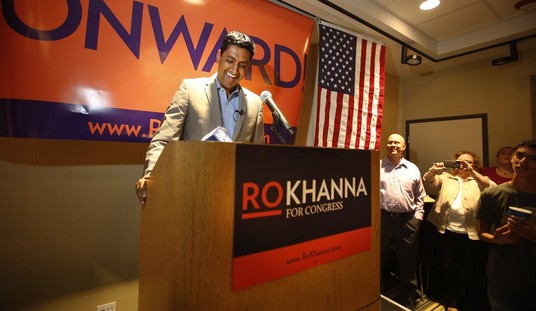The unemployment rate went up slightly in August to 9.6%, over the July rate of 9.5%, and overall the economy shed 54,000 jobs, according to the latest report from the BLS. Private sector growth slowed from in July, dropping from an adjusted gain of 107,000 to 67,000, while the government terminated 131,000 jobs:
Nonfarm payroll employment changed little (-54,000) in August, and the unemployment rate was about unchanged at 9.6 percent, the U.S. Bureau of Labor Statistics reported today. Government employment fell, as 114,000 temporary workers hired for the decennial census completed their work. Private-sector payroll employment continued to trend up modestly (+67,000).
The news didn’t get any better on the long-term front, either — and has remained little changed between Recovery Summer and last summer’s meltdown:
The number of long-term unemployed (those jobless for 27 weeks and over) declined by 323,000 over the month to 6.2 million. In August, 42.0 percent ofunemployed persons had been jobless for 27 weeks or more. (See table A-12.)
In August, the civilian labor force participation rate (64.7 percent) and the employment-population ratio (58.5 percent) were essentially unchanged.
(See table A-1.)The number of persons employed part time for economic reasons (sometimes referred to as involuntary part-time workers) increased by 331,000 over the month to 8.9 million. These individuals were working part time because their hours had been cut back or because they were unable to find a full-time job. (See table A-8.)
About 2.4 million persons were marginally attached to the labor force in August, little changed from a year earlier. (The data are not seasonally ad-
justed.) These individuals were not in the labor force, wanted and were available for work, and had looked for a job sometime in the prior 12 months. They were not counted as unemployed because they had not searched for work in the 4 weeks preceding the survey. (See table A-16.)Among the marginally attached, there were 1.1 million discouraged workers in August, an increase of 352,000 from a year earlier. (The data are not seasonally adjusted.) Discouraged workers are persons not currently looking for work because they believe no jobs are available for them. The remaining 1.3 million persons marginally attached to the labor force had not searched for work in the 4 weeks preceding the survey for reasons such as school attendance or family responsibilities.
Bottom line, the economy still has not started to create jobs, and we are continuing to fall further and further behind. The baseline population growth requires a positive job-growth level of 100,000 or more just to break even, so 67,000 additional jobs means we lost ground by at least 33,000 jobs. The slowdown in private-sector job growth even from the below-water level we have mainly seen in the last two years indicates that we’re in for a long, dry spell.
However, Reuters unexpectedly finds this to be good news:
U.S. employment fell for a third straight month in August, but the decline was far less than expected and private payrolls growth surprised on the upside, easing pressure on the Federal Reserve to prop up growth.
Nonfarm payrolls fell 54,000, the Labor Department said on Friday as temporary jobs to conduct the decennial dropped by 114,000.
Private employment, considered a better gauge of labor market health, increased 67,000 after a revised 107,000 gain in July. In addition, the government revised payrolls for June and July to show 123,000 fewer jobs lost than previously reported.
So we created 40,000 fewer private sector jobs and the unemployment rate went up, and that’s a surprise on the upside? That’s mighty fine spin by Reuters … and completely expected.








Join the conversation as a VIP Member